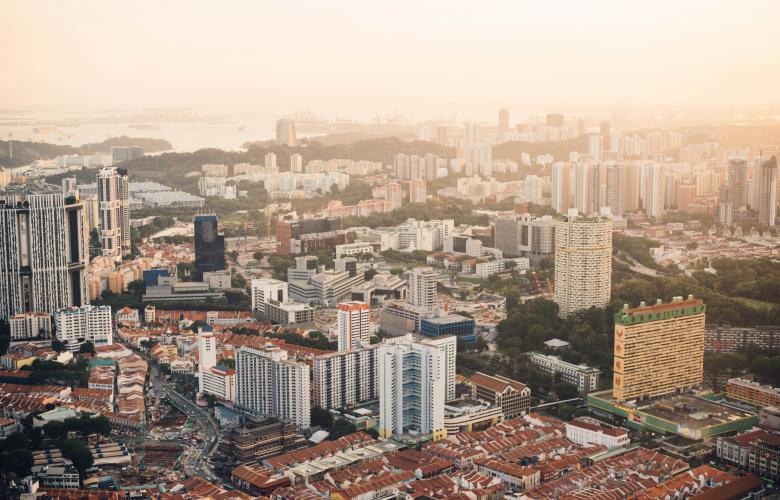Singapore's residential market saw strong price momentum and a pick up in launches and sales for Q2 2018 according to the recent statistics released by the Urban Redevelopment Authority (URA) and JLL's National Director for Research and Consultancy, Ong Teck Hui.
At a glance:
- 2,437 private homes placed on the market in Q2 2018.
- Developers sold 2,366 private residential units in Q2, a 49.7% increase from Q1.
- Secondary market sales registered 4,820 units in Q2.
- URA private residential property price index rose 3.4% in Q2.
- The non-landed price index for the RCR rose 5.6% in Q2.
- The landed segment saw an increase of 4.1% in its price index.
Launches and sales
Launches of private homes picked up significantly in Q2 2018 with 2,437 units placed on the market by developers, 164.6% higher than in Q1 and 21.2% higher YoY. Rising prices and a more buoyant market led developers to increase the launches during the second quarter. Launch figures for Q3 could remain healthy as Riverfront Residences, Park Colonial and Stirling Residences have initiated their launches in July and other projects are also gearing up for launch including Daintree Residences and The Tre Ver.
Developers sold 2,366 private residential units in Q2, a 49.7% increase from Q1 but 23.1% less than the same period last year. Nevertheless, it reflects healthy demand which is supply led. More units could have been sold if there had been more launches during the quarter. The tally for new private homes sold in H1 is 3,947 units, while the full year estimate is 8,000 to 9,000 units, which is roughly 15% to 25% lower than in 2017.
Sales of private homes in the secondary market were robust, registering 4,820 units in Q2 which is a 28.6% increase from Q1 and 25.9% higher YoY. It is the highest quarterly secondary market sales volume since Q2 2011 when 5,348 units were sold. As buying opportunities in the primary market were not picking up fast enough, many buyers resorted to the secondary market, pushing up its transaction volume.
Price momentum
The URA private residential property price index rose 3.4% in Q2 2018, unchanged from the earlier flash estimate, indicative of an even momentum in the price increase. The price index for non-landed homes in Core Central Region (CCR) rose 0.9%, lower than the 1.4% recorded during the flash estimate and significantly less than the 5.5% increase in Q1. This could be indicative of some price resistance as CCR prices surged strongly in during the first quarter.
The non-landed price index for Rest of the Central Region (RCR) rose 5.6% in Q2, similar to the flash estimate of 5.7%. Price increases in RCR seem to be catching up after a gentle rise of 1.2% in Q1. The non-landed price index for Outside Central Region (OCR) registered a 3.0% increase, higher than the 2.9% flash estimate and slower than the 5.6% increase in Q1.
In the landed segment, an increase of 4.1% in its price index was recorded, higher than the 3.8% during flash estimate and the 1.9% rise in Q1. Demand for landed homes has picked up strongly since the residential market turned around in mid-2017. The number of landed homes sold in the year from mid-2017 to mid-2018 rose by 59% compared to the preceding one year, based on URA Realis data.
Price increases are expected to moderate in the coming quarters due to the effect of the cooling measures imposed earlier in July.
Vacany rates
The URA statistics reveal that vacancy rate fell for the third consecutive quarter on the back of low completed supply. In Q2, 1,327 new private homes were completed, 32.9% less than the first quarter and 65.3% lower YoY. It is the lowest number of units completed since Q2 2007 when 1,116 units were completed. The low completion numbers contributed to a low net new supply of 1,152 units which fell short of new demand of 1,994 units resulting in vacancy rate dropping to 7.1% in 2Q18 from 7.4% in the previous quarter.
The lower vacancy rate augurs well for the rental market as reflected by the 1% rise in the overall rental index. It is noted that the indices for non-landed homes in CCR, RCR, OCR as well as for landed homes have all turned positive, the first time since Q2 2013. This suggests that the recovery in the residential rental market is likely to be on a firm footing. The trend of low net new supply is expected to continue, aided by collective sales units being withdrawn from the market, which will help to keep vacancy rates healthy and support further increases in rents.
View the Urban Redevelopment Authority 2nd Quarter 2018 real estate statistics here
For more information about Singapore's residential market or the Urban Redevelopment Authority Q2 real estate statistics email Ong Teck Hui, National Director of Research and Consultancy, JLL Singapore via the contact details listed below.
Similar to this:
In Singapore "overall real estate investment sales remained healthy" during Q2
Knight Frank say Malaysia's property market is picking up
CBRE says buyers want income-producing properties









